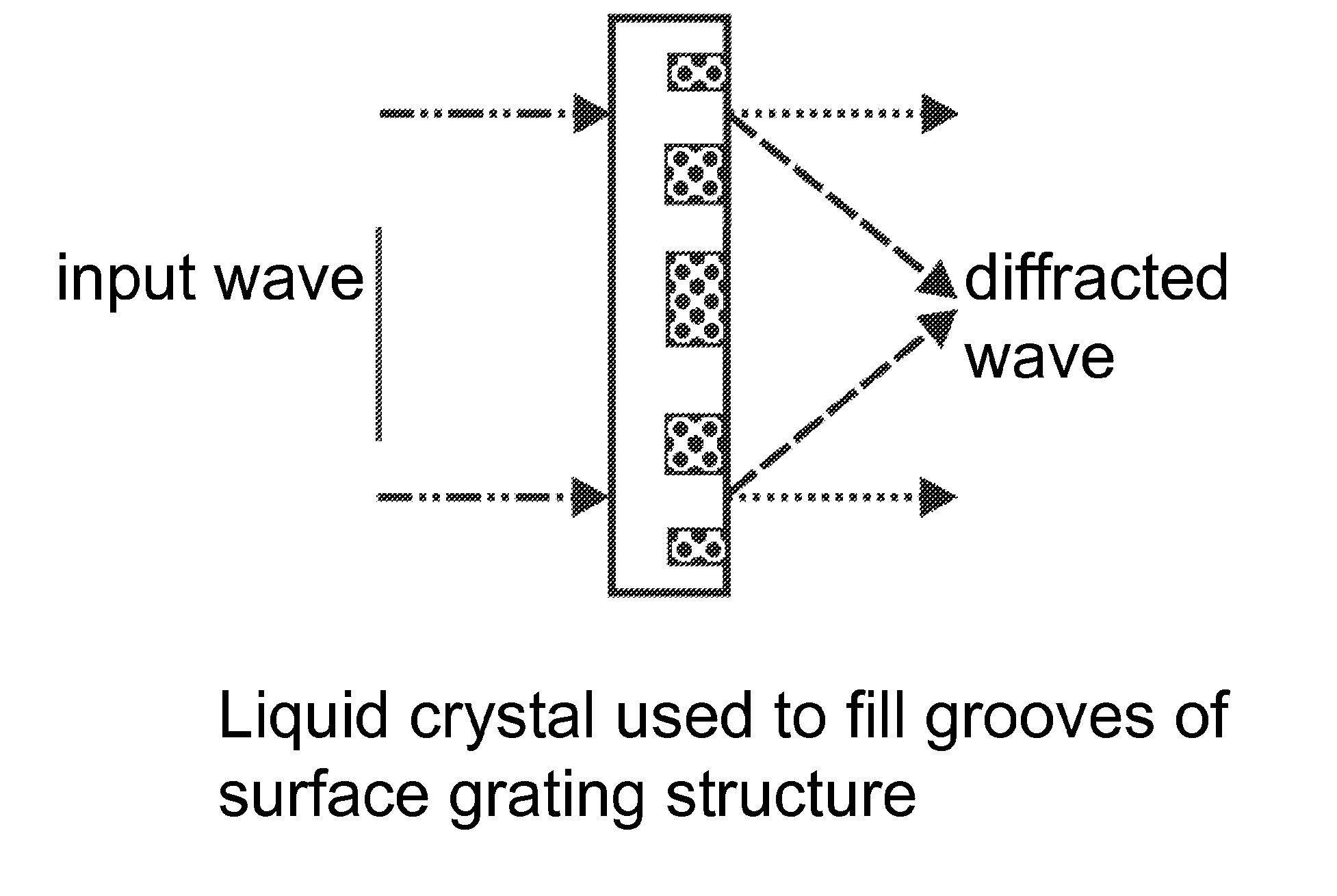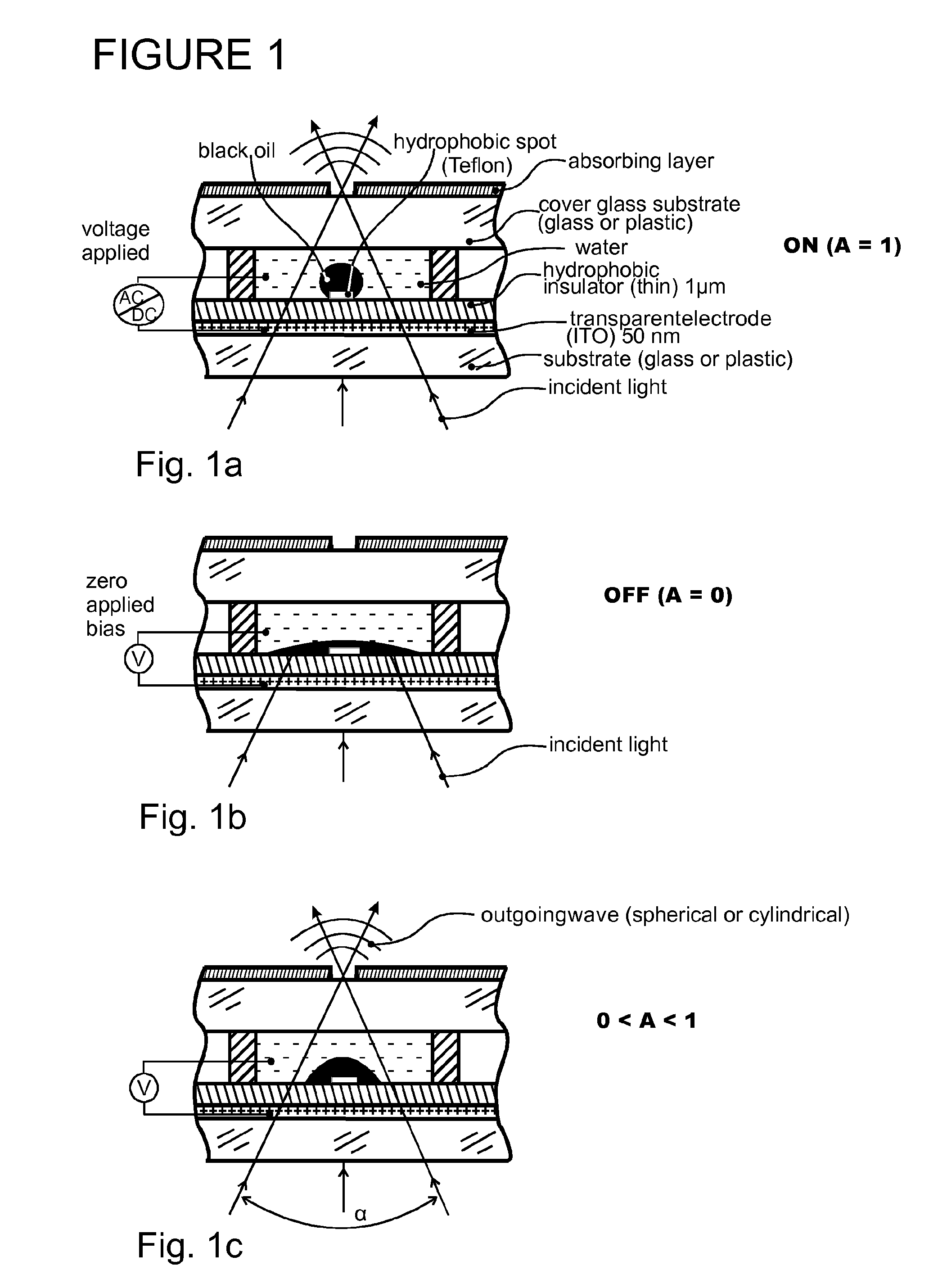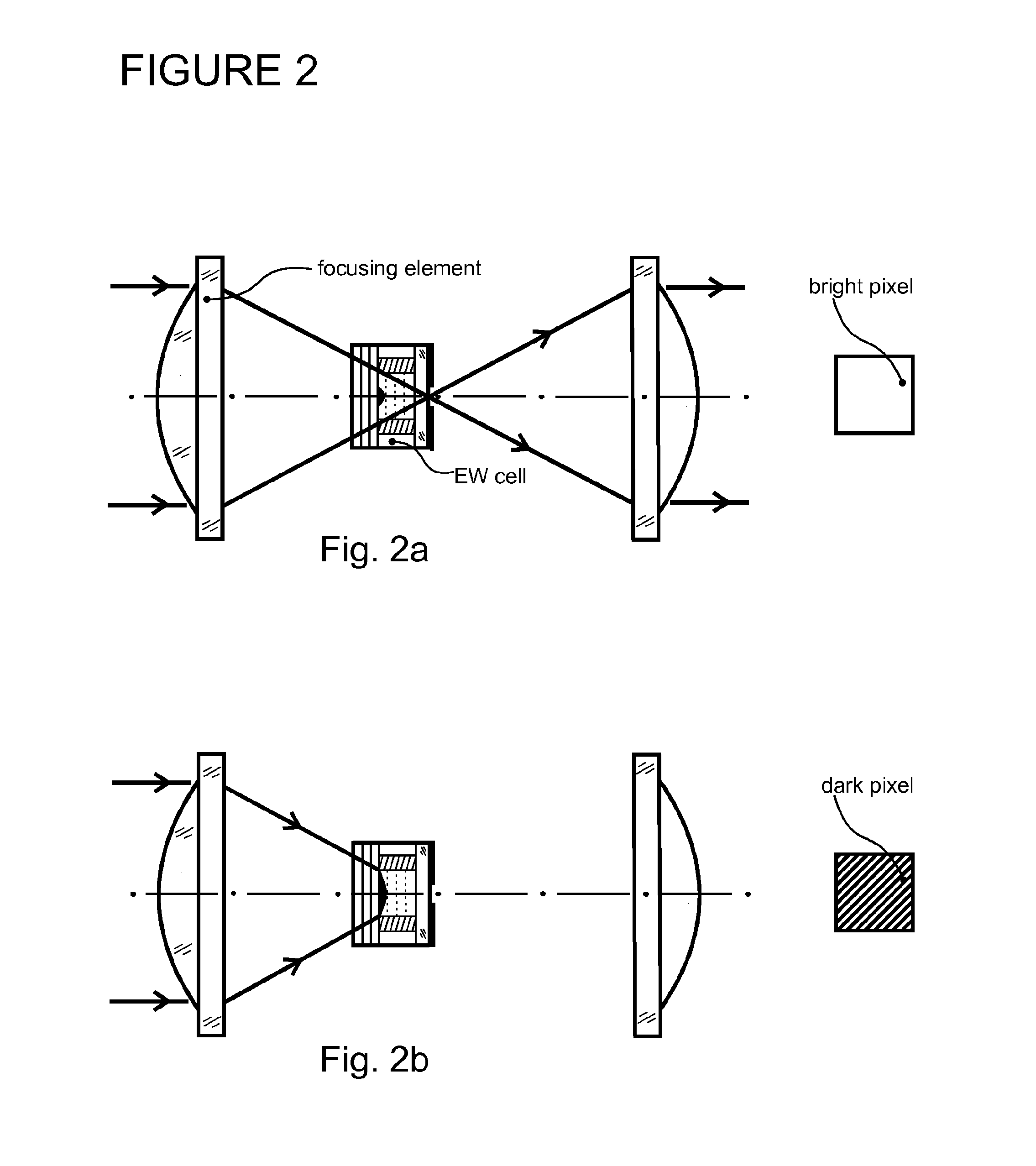Spatial Light Modulator Using Electrowetting Cells
a technology of electrowetting cells and light modulators, applied in the field of spatial light modulators, can solve problems such as viewer discomfort, and achieve the effects of enhancing contrast, enhancing contrast, and enhancing contras
- Summary
- Abstract
- Description
- Claims
- Application Information
AI Technical Summary
Benefits of technology
Problems solved by technology
Method used
Image
Examples
Embodiment Construction
[0064]Various implementations will now be described.
A. Spatial Light Modulator for Modulating Light Field Amplitude and Display Device Using Electrowetting Cells
[0065]This implementation relates to a spatial light modulator, and in particular to a spatial light modulator comprising pixels, where for each pixel, a light field amplitude transmitted by the pixel is modulated by an electrowetting cell. The spatial light modulator may be used to generate a desired video hologram.
[0066]This implementation relates to a spatial light modulator, and in particular to a spatial light modulator suitable for displaying dynamic computer-generated holograms, where the amplitude of a light field is spatially modulated. It also relates to an active matrix display device incorporating a spatial light modulator according to the implementation, more particularly to an electrowetting display device. It further relates to a switchable light source and light source array with an individually adjustable in...
PUM
| Property | Measurement | Unit |
|---|---|---|
| response time | aaaaa | aaaaa |
| light modulation switching time | aaaaa | aaaaa |
| frequency | aaaaa | aaaaa |
Abstract
Description
Claims
Application Information
 Login to View More
Login to View More - R&D
- Intellectual Property
- Life Sciences
- Materials
- Tech Scout
- Unparalleled Data Quality
- Higher Quality Content
- 60% Fewer Hallucinations
Browse by: Latest US Patents, China's latest patents, Technical Efficacy Thesaurus, Application Domain, Technology Topic, Popular Technical Reports.
© 2025 PatSnap. All rights reserved.Legal|Privacy policy|Modern Slavery Act Transparency Statement|Sitemap|About US| Contact US: help@patsnap.com



